Eating in Iran: a tongue-tip adventure through time and silk road
Luna
I always think that the Iranian diet is hard to describe with the word "beauty". The cooking method is single, the ingredients are limited, and the taste is not rich … It is too easy to "spit" the Iranian diet. However, the history of more than 3,000 years, the location at the turn of Asia and Europe, and the arid environment have all brought unique personality to the Iranian diet. It’s more like an adventure on the tip of the tongue. The sense of taste has shuttled through the Silk Road in Wan Li for thousands of years. In the end, I can’t simply evaluate it with delicious or unpalatable food, but I can say that diet has become an important way to understand Iran.
Ramadan survival
Because I arrived in Ramadan, my foraging experience in Iran was really not good. Most restaurants are closed, and there is almost no food for a whole day. But from the few small restaurants that are still open, I can get a glimpse of the most common and common diet in Iran.
crusty
I stood on the street with a high temperature of more than 40 degrees and gathered my headscarf. The scorching sun made me a little dizzy. There are almost no pedestrians on the streets of Isfahan, and all the shops are closed during Ramadan, except one: the shopkeeper hiding in the shadow is guarding a bag of neatly stacked cakes.
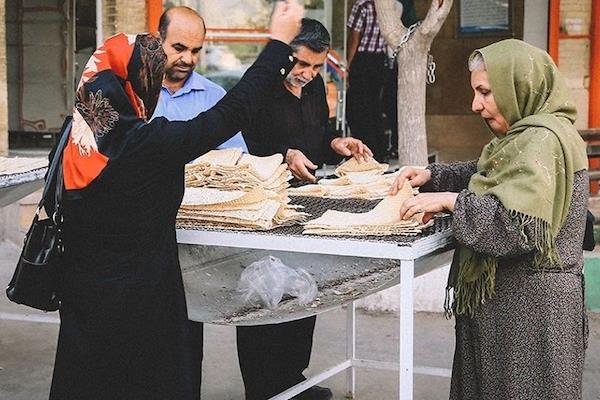
Ravensh All the pictures in this article were taken by Luna.
Lavash is an unfermented pancake, which is made of water and flour. The production method is described as "like a printed newspaper" in the documentary "Flavor Man". In fact, I think it tastes like chewing old newspapers, dry, tough and tasteless. But it is one of the daily staple foods in the Middle East, including Iran, and the surrounding Caucasus and Central Asia. Ravensh can be guaranteed for up to 6 months. Imagine the merchants in ancient Persia crossing the snow-capped mountains, Gobi desert and desert in Eurasia with camel teams. This kind of portable and full-bodied cake is really an excellent choice.
There are many kinds of Iranian cakes, and the word "Naan" comes from Persian. With the spread of Silk Road trade, fermented flour cakes have formed different forms in various places. For example, sangak in Iran is quite similar to Shizi steamed bread in Shaanxi.
Kebab
At dusk, the announcement sounded, announcing the end of the day when eating was forbidden and the time for dinner came. But even at night, there are not many restaurants open in Tabrizi, and there are even fewer choices on the menu, mainly kebab. This kind of meat dishes mostly use barbecue as a cooking method, which is one of the most popular main dishes in the Middle East, and it is eaten with rice or naan.
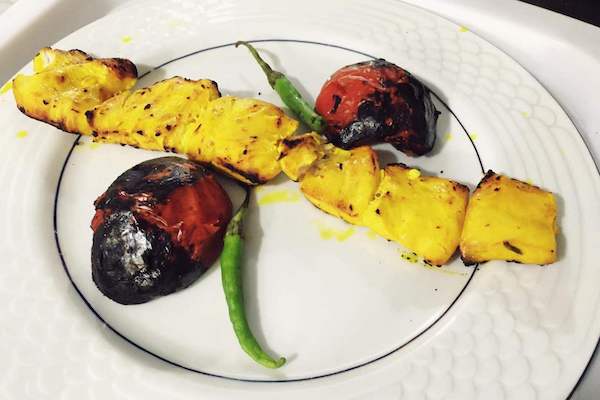
However, the food served startled me: a yellow stick was placed in the middle of the plate, with half a black baked tomato beside it, dotted with two green peppers. That yellow stick is my roast chicken, which is dry, hard and hard. As for tomatoes, I can’t bear to eat them. This dinner seems to laugh at me, who was baked in the hot Ramadan sun all day.
Mutton brain soup
Perhaps there are too few restaurants open in Ramadan. During my month in Iran, I have never eaten the rumored fresh and juicy Persian barbecue. The most important food for survival in Ramadan is the sheep brain soup that looks ferocious.
The hot night wind in Tehran blew a fragrance in front of me, and I found this small shop in a quiet side street along the fragrance. The sheep’s head is being stewed in a soup pot, with empty eyes looking straight at the diners, but the milky soup is bubbling, which makes me irresistible because of hunger and kebab.
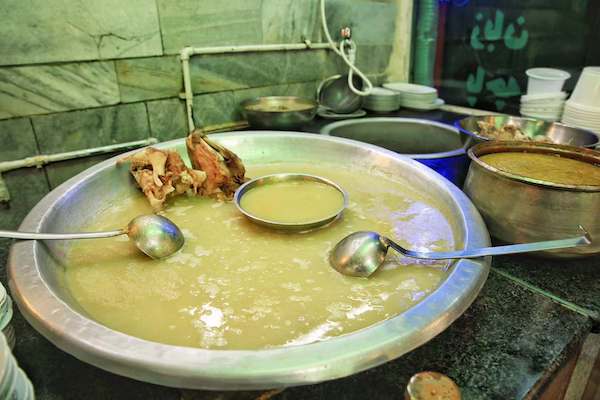
Mutton Soup
The mutton soup is rich, with a little spice and sweetness, which just neutralizes the fishy smell of mutton. I quickly drank a bowl and then ate the mutton satisfactorily. Later, I discovered that this way of eating was wrong. On the second visit, the boss demonstrated the correct way of local dining: first, add salt, lemon juice and cinnamon powder to taste, and then break the naan into pieces and throw it into the soup-a bit like mutton buns in Xi ‘an, which is obviously the result of thousands of years of exchanges between the East and the West.
Bosi renjia
It was not until I stayed in a traditional hotel and ate local home cooking that my adventure with the tip of my tongue entered a slightly pleasant period. Iran’s diet depends largely on local products, and local home cooking can better reflect different tastes in different regions, and the enthusiasm of Persians will also add a lot of color to food.
Dizi
Many traditional mansions in Kashan, Shiraz and Yazd have been converted into hotels, continuing the ancient hospitality. These mansions usually have a history of more than 100 years. Ancient and beautiful houses surround the courtyard. Pomegranate trees are planted in front of the porch, and there is a pool of clear water in the middle of the courtyard, which occasionally brings coolness when the wind blows.
The temperature in Shiraz in the valley is lower than that in other cities on the edge of the desert. We guests lie on couches laid in the shade of the courtyard and enjoy black tea, dates, salty yogurt and dizi.
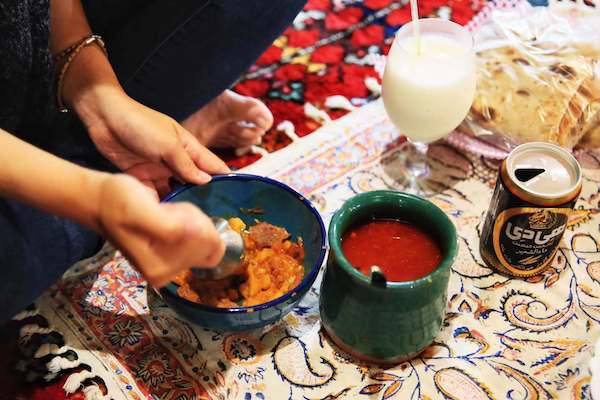
Dizi
Dizi is a kind of stew, named after the earthenware pot where the stew is held, which is very common in Iran. Stew chickpeas, potatoes, tomatoes and mutton together until they are soft and rotten. Before eating, mash all these ingredients with a pestle, and then scoop out the broken mud with a spoon or naan cake to eat. Ignoring the slightly disgusting process of mashing, I eat it as stewed mutton with potatoes. The meat is delicious and melts in the mouth, making it the best main course in Iran.
Hummus
Near Persepolis, the ruins of the ancient Persian capital, I first walked into a local family. Surrounded by deserts, the whole village is almost made of local materials and built of loess. The host greeted us at the door and walked into his small courtyard. A bright and soft carpet had been laid in the cool and pleasant room, and the hostess set lunch in the middle of the carpet with a smile.
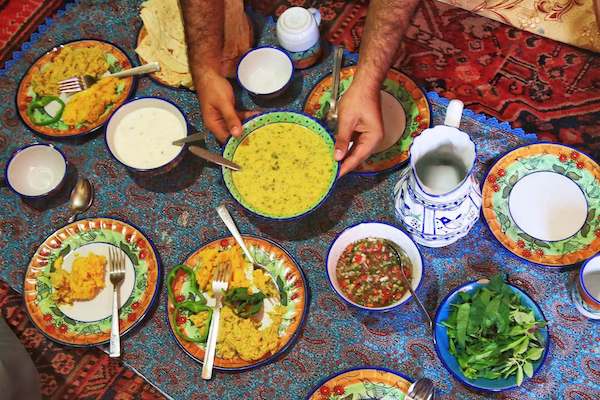
Hummus and hummus soup
Of course, the staple food is Ravensh, and the main course is hummus and hummus soup. Chickpea originated in the Middle East, and was introduced to China from Persia in the Yuan Dynasty, and often appeared in the prescriptions of traditional Chinese medicine. Middle Eastern countries, including Iran, have always used chickpeas as ingredients. The mashed beans are paired with olive oil and mint leaves, and the taste is fresh and dense. Pepper, onion and sour cream are added to bean soup, which is a good way to supplement nutrition in the barren desert.
After dinner, the host family sent black tea. In the warm water vapor, the host sang a song on the tambourine. Although the lyrics were incomprehensible, the music was cheerful and melodious. At that moment, I seemed to have joined the caravan more than 1000 years ago. After a long journey, travelers from far away finally came to the dream Persian capital.
camel meat
Iranians, or "Persians" as they prefer to say, have been outstanding businessmen on the Eurasian continent since ancient times. Their camel team crosses the desert Gobi and communicates with things, so camel meat is also a very popular food in Yazd, on the edge of the desert.
In this ancient city built with loess bricks, there is a traditional hotel named "Silk Road" that provides camel meat with two cooking methods: roasting and stewing. The meat quality of camel is a little rough, even the stewed meat can’t reach the soft rotten degree of mutton, but the meat is purer and more rustic, and there is no fishy smell, which can satisfy meat lovers.
A little sweet and sour
In the last few days of my Iranian trip, the end of Ramadan has restored amazing vitality to all cities. The streets that were originally empty have become bustling, shops in Bazzarri have opened one after another, and fragrant spices and sweet dried fruits are full, and I have also ushered in the most delicious period of food.
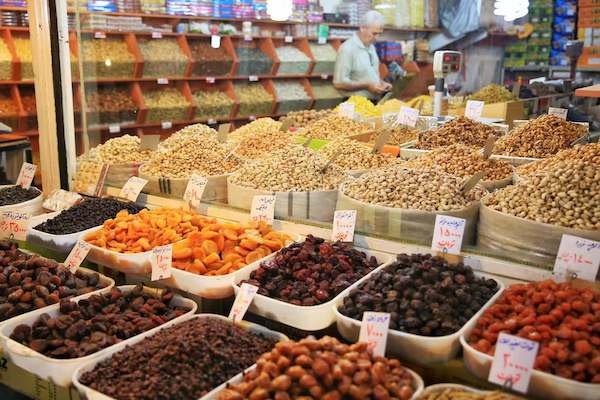
Bazzarri’s dried fruits
Saffron and Berberis
Under the bright sun in Tehran, a long line outside Bazaar attracted my attention. People stood in the high temperature and talked eagerly. The procession extended from the street to the second floor of a small building. I leaned over and looked around. On the second floor, there was a lively restaurant, full of cheerful diners and full of sweet food. Like Iranians, I was hungry for almost a whole month, and I immediately joined the queue-I didn’t even know what to eat at that time.
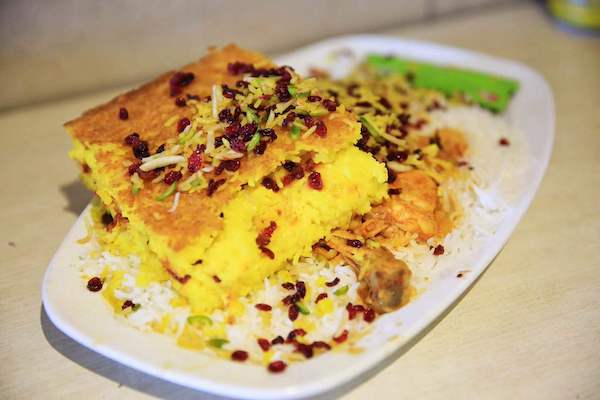
Zereshk Polo Morg
An hour later, I ate the only food served in the restaurant: Zereshk Polo Morgh. It looks very good. The diced orange-red rice is crispy outside and tender inside, with ruby-colored Berberis and bright green happy nuts scattered on it, and a big chicken leg.
I took a bite. The rice was crispy on the outside and soft on the inside. The entrance was very sour, but the aftertaste was faintly sweet. It was very appetizing on a hot summer day. No wonder so many people lined up. The orange-red color of rice comes from Iran’s specialty saffron, and Berberis is added. Its sour taste and salty chicken legs make the whole dish interesting.
This is the most delicious meal I have ever eaten in Iran, but my traveling companion was bitten by acid.
cherry
The vehicle took us out of Gatzwin and headed for the colorful Elbers Mountains. As the altitude increased, the temperature gradually dropped, and green Woods began to appear in the originally barren valley. Iranians on the roadside are guarding boxes of bright red cherries, waiting for the buyers in the city to arrive.
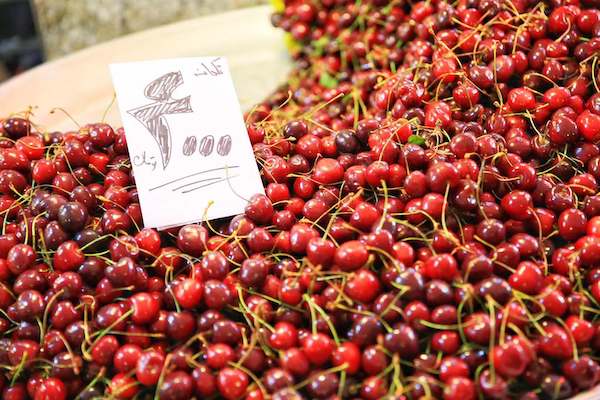
cherry
When it comes to fruits in the Middle East, sweet dates and figs are often mentioned. They are made into dried fruits and exported in large quantities, which are world-famous. But don’t forget that Iran is also one of the origins of cherries. Cherry trees are everywhere in the valley from Tabrizi to Gatzwin, and ripe red cherries are hung on thick green branches, which is the most pleasant scenery in hot summer.
Because of its origin, Iranian cherries are extremely cheap. The best quality cherries are about the same size as the diameter of a dollar coin, and the fruit is full and round. When you take a bite, it immediately overflows with sweet and sour juice, and the price is only 6 yuan a catty. Think about the high price of cherries in China, and the sudden arrival of "freedom of cherries" makes me and my traveling companions very happy, and I can’t wait to finish my lifetime quota of cherries here.
ice cream
Before the trip, I was looking forward to eating ice cream every day in Iran. As the origin of saffron and pistachio, both flavors of ice cream are quite popular in Iran. So immediately after Ramadan, I rushed into the first ice drink shop I saw in Gatzwin.
The shopkeeper was in business with his young son, and when he saw me, he burst into a Persian warm smile. Language barrier, the owner simply opened the freezer for me to choose. A cold air rushed out and sprayed my face, and my mind was clear for a few minutes. I picked out the yellow and white ice cream that other guests were eating. The teenager carefully took out the humble little box and put it on the table, and handed me the plastic spoon. The white part is milky, the yellow part is pistachio, and the side is also stained with fine pistachio pieces.
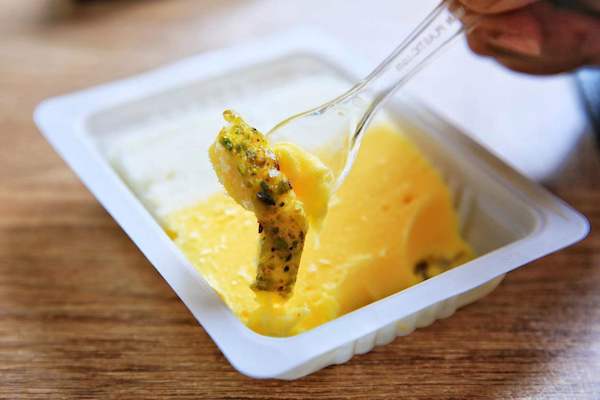
Pistachio nuts ice cream
This small green dried fruit originated in Iran and Iran, which was the first country to cultivate pistachios artificially and now the largest producer in the world. The taste of ice cream is not rich, but it tastes a little tough. The dense milk flavor is sweet with pistachios. When I swallow it, it is like finding a clear spring in the hot sun at noon in the desert-my Iranian food adventure is finally complete.